Abstract
The leukocyte-phagocytic function test which was found to be abnormal in boys with fatal granulomatous disease of childhood has been found to be abnormal to an intermediate extent in their mothers. Nine of nine mothers were shown to be abnormal, whereas none of eight fathers and none of five healthy brothers exhibited a defect. 10 of 16 female siblings were abnormal to the same degree as their mothers, as were all three maternal grandmothers available for study. Assuming that this intermediate functional defect represents the heterozygous state, the nine family pedigrees are entirely compatible with the concept that the trait is transmitted on the X-chromosome.
A tetrazolium dye-phagocytosis histochemical test was also abnormal in the carrier females and provided independent confirmation of the selection of the female siblings suspected of being carriers for the trait. In addition, this procedure gives indirect evidence that the gene in question is subject to the random inactivation that appears to affect many X-linked genes in mammalian females.
The family members were also studied with two of the metabolic assays that have been shown to be abnormal in the cells of affected boys. One assay, the oxidation of the first carbon of glucose-1-14C by the isolated leukocytes, was significantly abnormal in the cells of carrier females. The other assay, the oxidation of formate-14C by leukocytes of heterozygotes was not significantly different from control values.
The practical problem of diagnosing patients would appear to be best solved with a tetrazolium dye procedure, whereas the more subtle abnormality in carrier females is best detected with the leukocyte function test. Improved methods for the function test are being developed.
Full text
PDF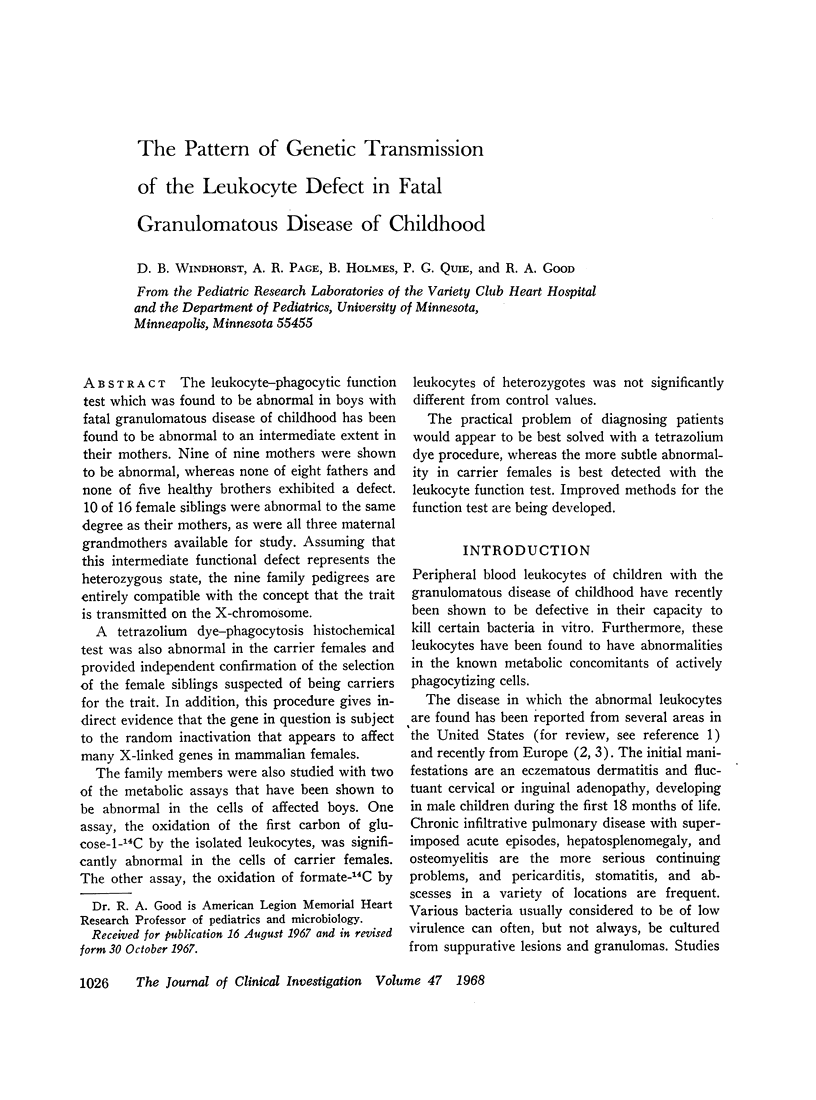
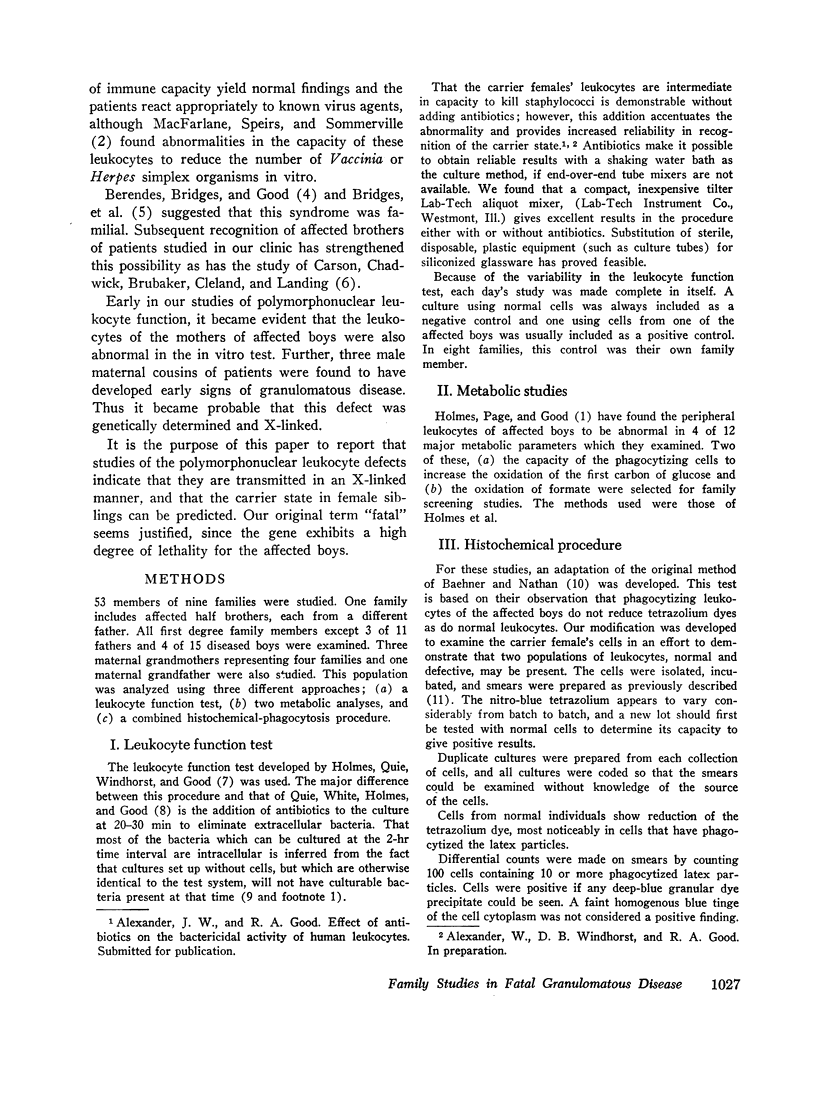
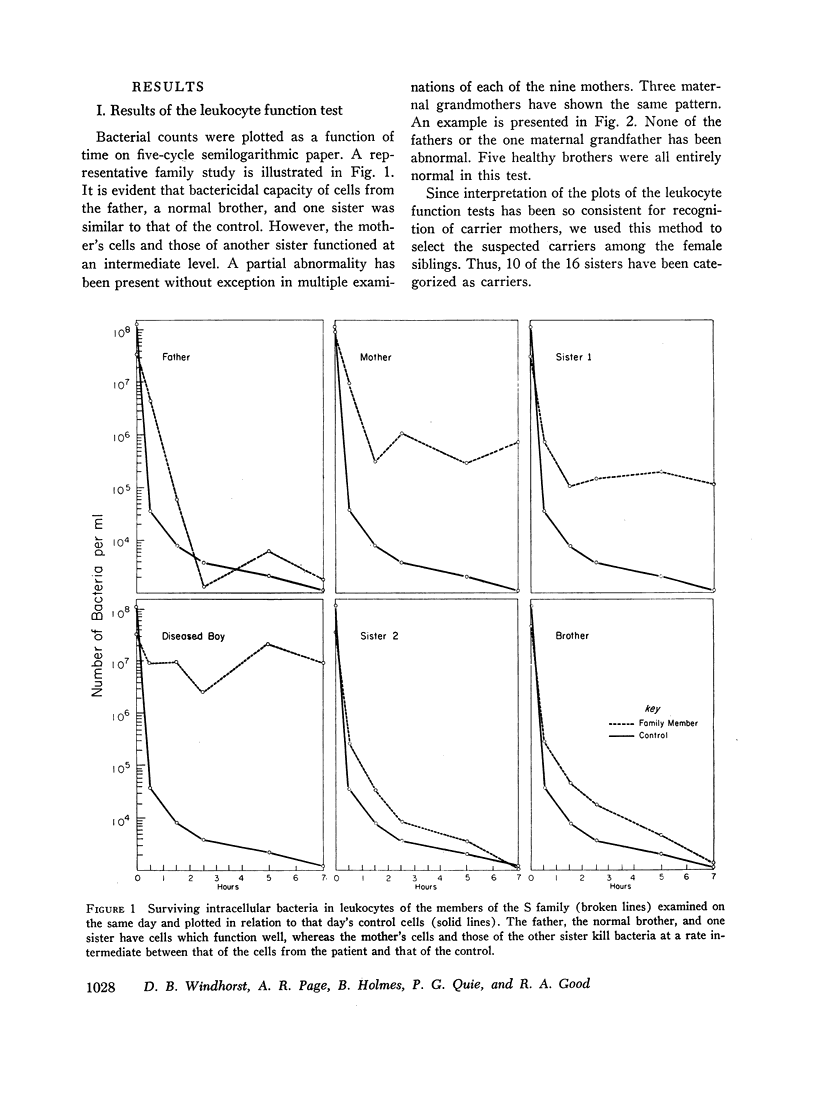
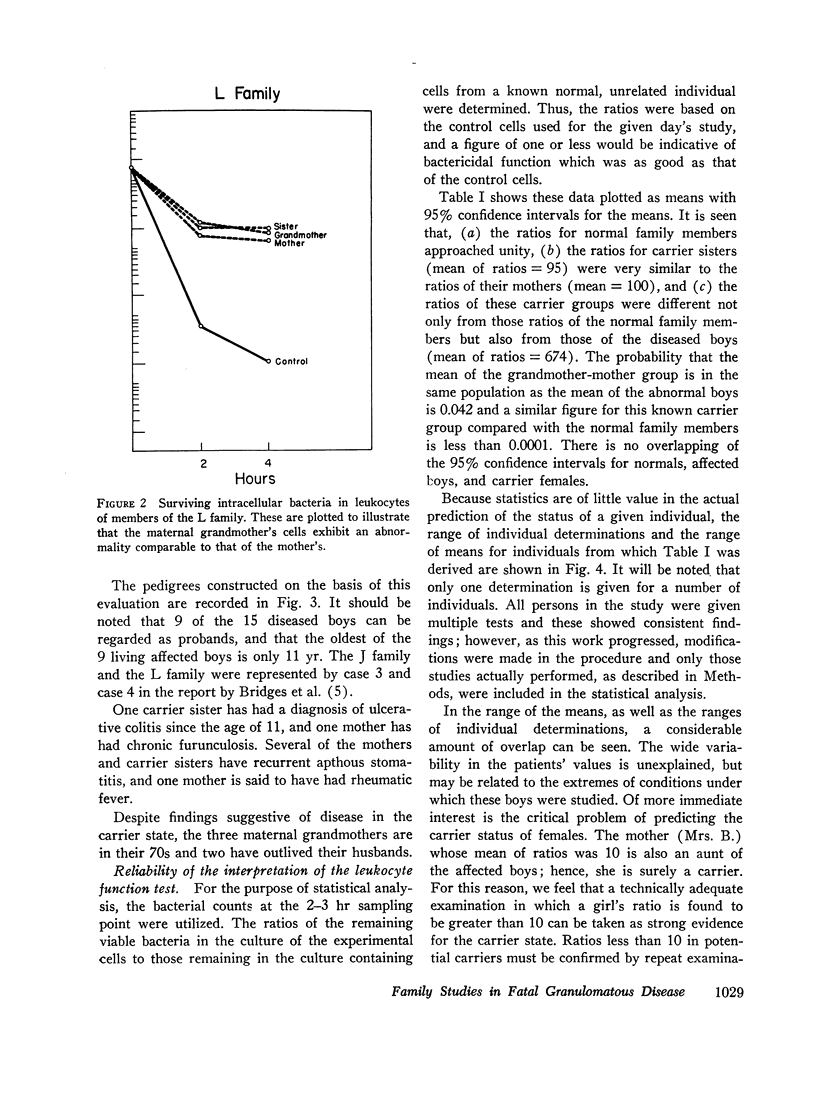
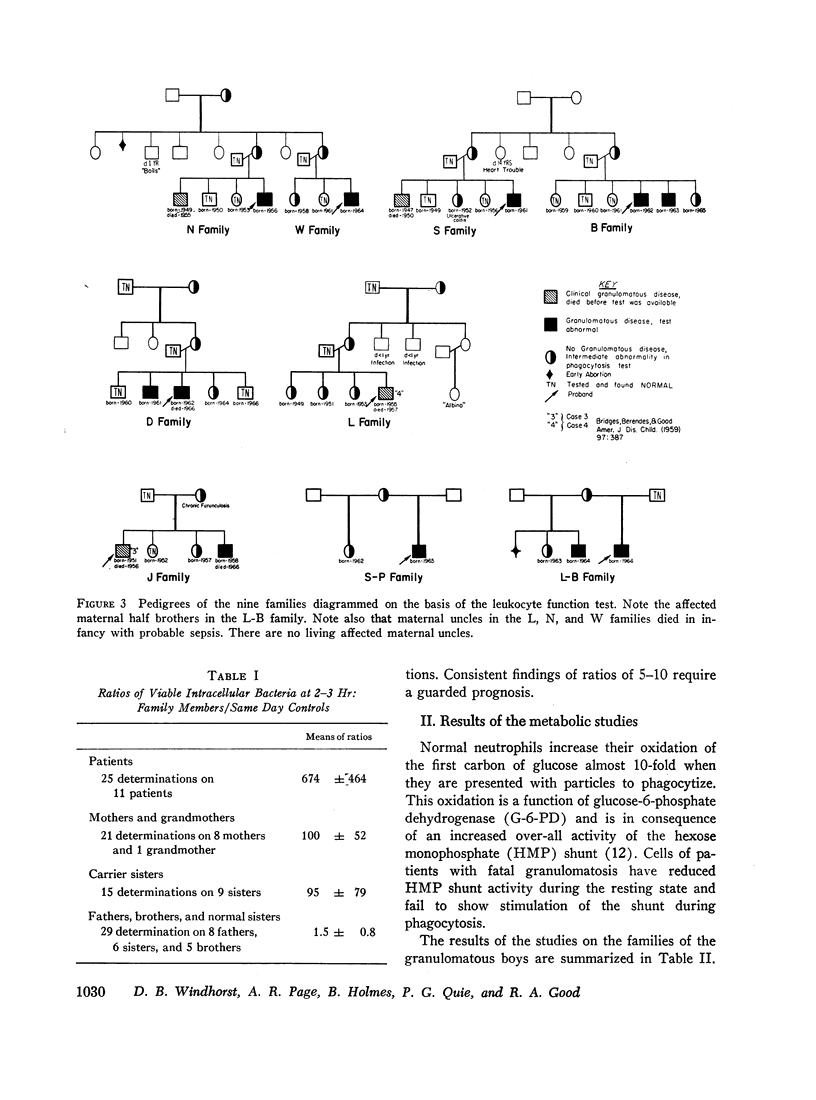
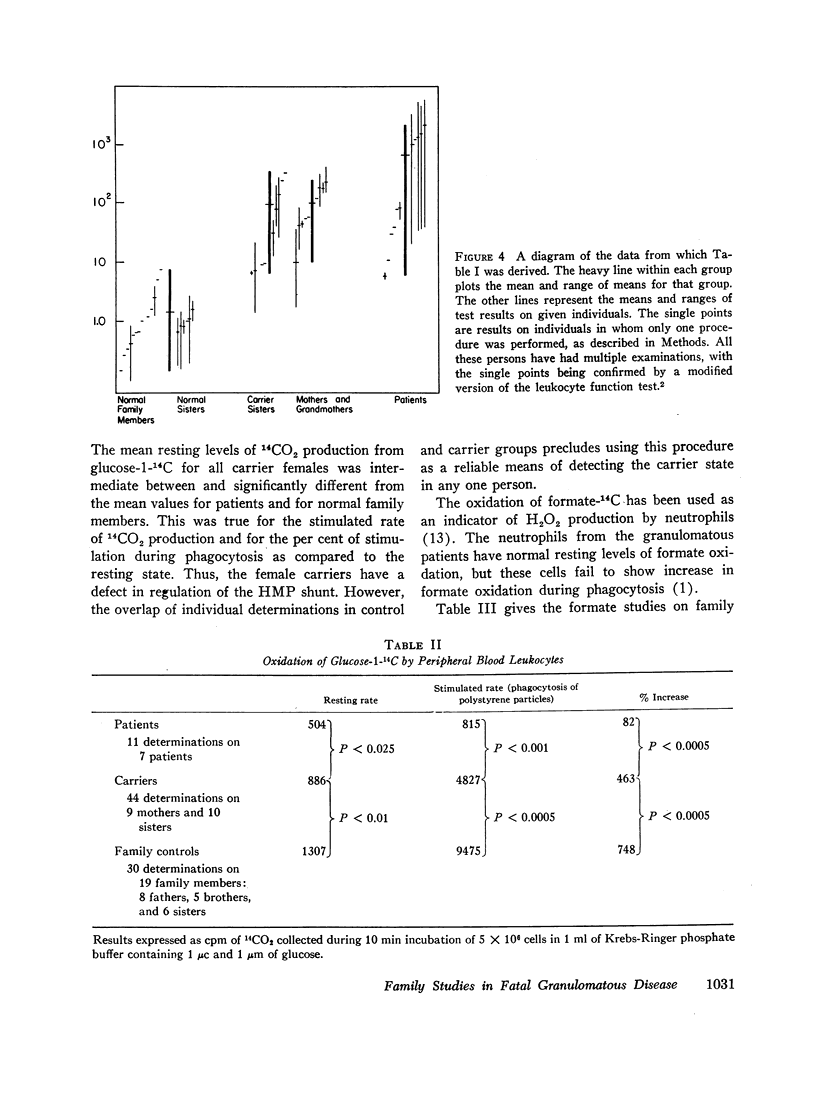
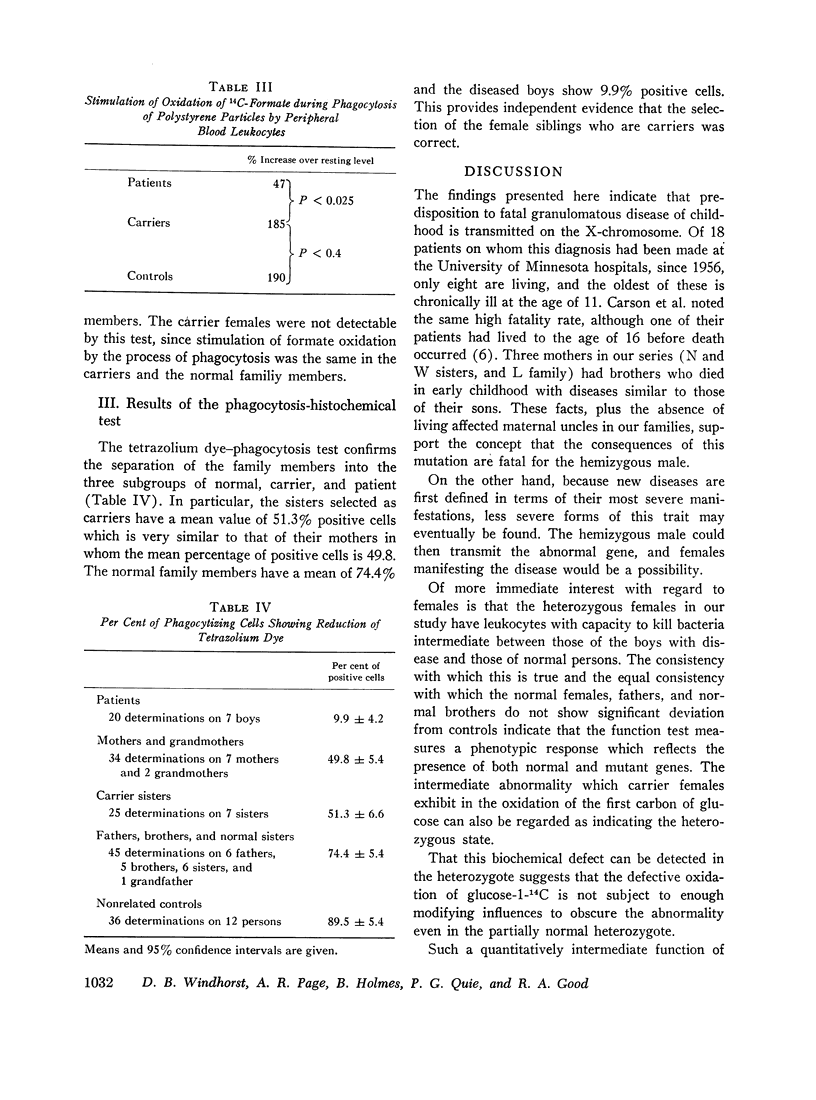
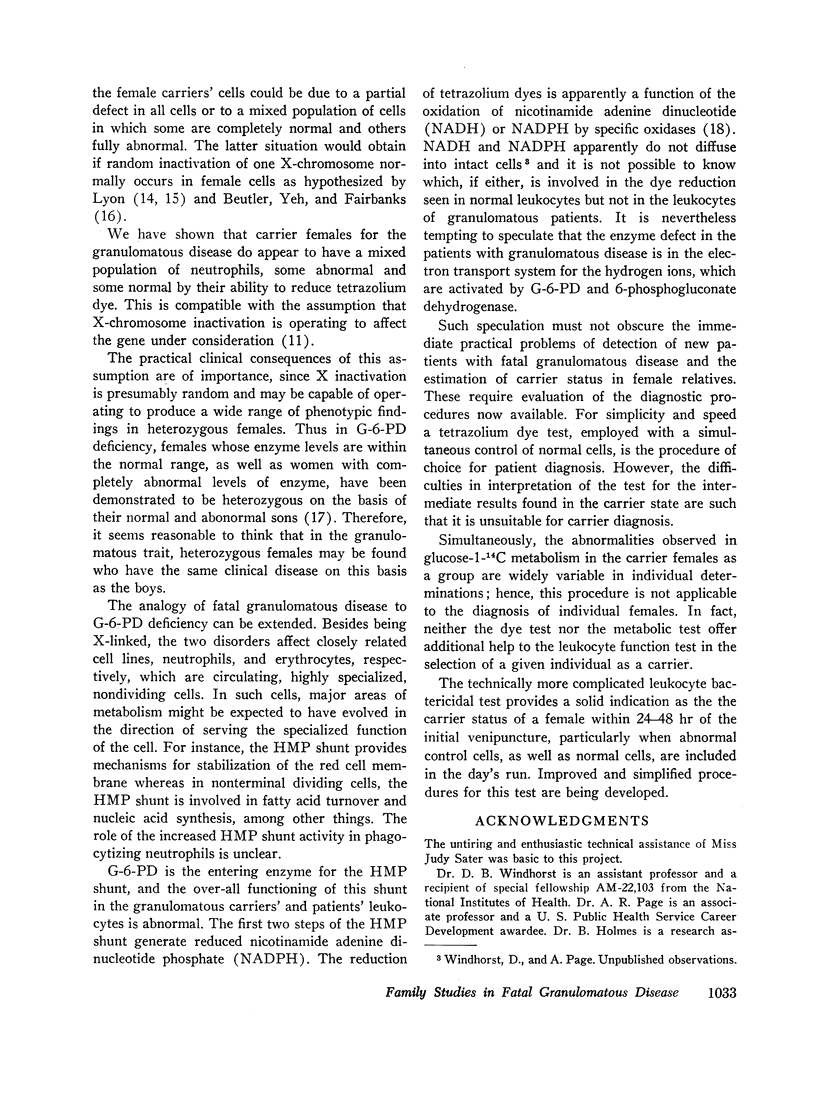
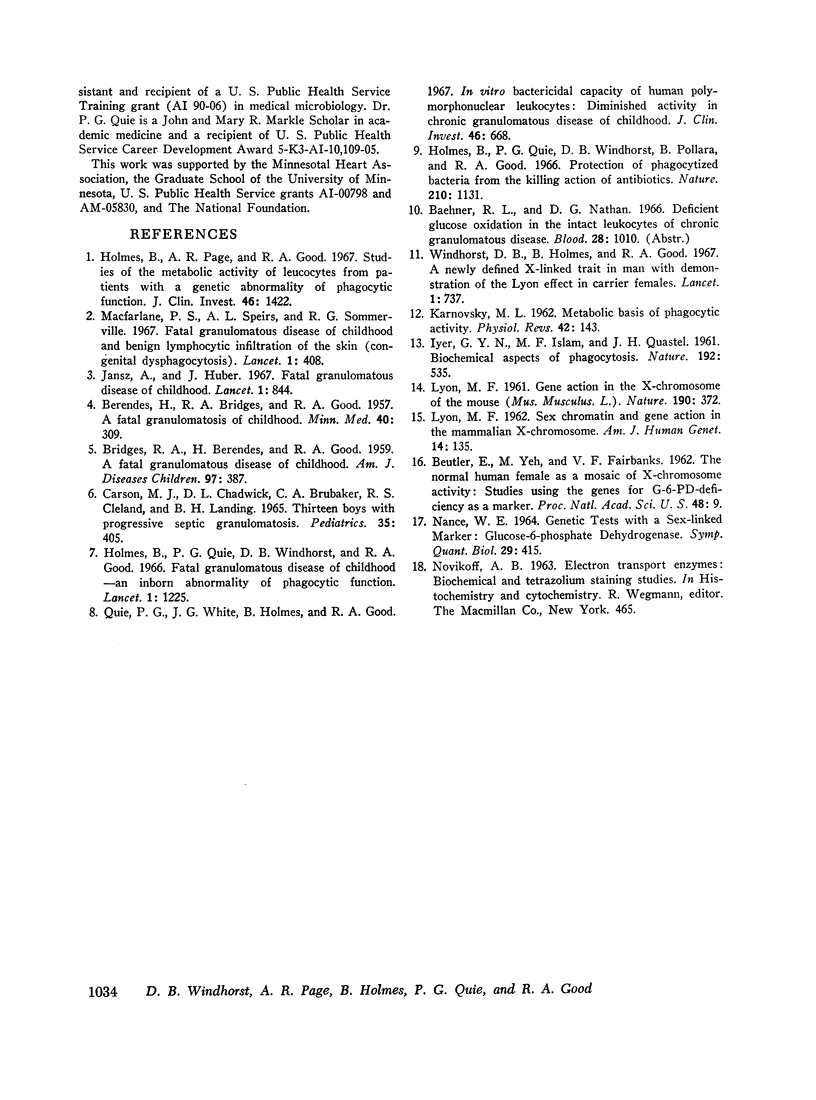
Selected References
These references are in PubMed. This may not be the complete list of references from this article.
- BERENDES H., BRIDGES R. A., GOOD R. A. A fatal granulomatosus of childhood: the clinical study of a new syndrome. Minn Med. 1957 May;40(5):309–312. [PubMed] [Google Scholar]
- BEUTLER E., YEH M., FAIRBANKS V. F. The normal human female as a mosaic of X-chromosome activity: studies using the gene for C-6-PD-deficiency as a marker. Proc Natl Acad Sci U S A. 1962 Jan 15;48:9–16. doi: 10.1073/pnas.48.1.9. [DOI] [PMC free article] [PubMed] [Google Scholar]
- BRIDGES R. A., BERENDES H., GOOD R. A. A fatal granulomatous disease of childhood; the clinical, pathological, and laboratory features of a new syndrome. AMA J Dis Child. 1959 Apr;97(4):387–408. [PubMed] [Google Scholar]
- CARSON M. J., CHADWICK D. L., BRUBAKER C. A., CLELAND R. S., LANDING B. H. THIRTEEN BOYS WITH PROGRESSIVE SEPTIC GRANULOMATOSIS. Pediatrics. 1965 Mar;35:405–412. [PubMed] [Google Scholar]
- Holmes B., Page A. R., Good R. A. Studies of the metabolic activity of leukocytes from patients with a genetic abnormality of phagocytic function. J Clin Invest. 1967 Sep;46(9):1422–1432. doi: 10.1172/JCI105634. [DOI] [PMC free article] [PubMed] [Google Scholar]
- Holmes B., Quie P. G., Windhorst D. B., Good R. A. Fatal granulomatous disease of childhood. An inborn abnormality of phagocytic function. Lancet. 1966 Jun 4;1(7449):1225–1228. doi: 10.1016/s0140-6736(66)90238-8. [DOI] [PubMed] [Google Scholar]
- Holmes B., Quie P. G., Windhorst D. B., Pollara B., Good R. A. Protection of phagocytized bacteria from the killing action of antibiotics. Nature. 1966 Jun 11;210(5041):1131–1132. doi: 10.1038/2101131a0. [DOI] [PubMed] [Google Scholar]
- Jansz A., Huber J. Fatal granulomatous disease of childhood. Lancet. 1967 Apr 15;1(7494):844–845. doi: 10.1016/s0140-6736(67)92806-1. [DOI] [PubMed] [Google Scholar]
- KARNOVSKY M. L. Metabolic basis of phagocytic activity. Physiol Rev. 1962 Jan;42:143–168. doi: 10.1152/physrev.1962.42.1.143. [DOI] [PubMed] [Google Scholar]
- LYON M. F. Gene action in the X-chromosome of the mouse (Mus musculus L.). Nature. 1961 Apr 22;190:372–373. doi: 10.1038/190372a0. [DOI] [PubMed] [Google Scholar]
- LYON M. F. Sex chromatin and gene action in the mammalian X-chromosome. Am J Hum Genet. 1962 Jun;14:135–148. [PMC free article] [PubMed] [Google Scholar]
- Macfarlane P. S., Speirs A. L., Sommerville R. G. Fatal granulomatous disease of childhood and benign lymphocytic infiltration of the skin (congenital dysphagocytosis). Lancet. 1967 Feb 25;1(7487):408–410. doi: 10.1016/s0140-6736(67)91174-9. [DOI] [PubMed] [Google Scholar]
- NANCE W. E. GENETIC TESTS WITH A SEX-LINKED MARKER: GLUCOSE-6-PHOSPHATE DEHYDROGENASE. Cold Spring Harb Symp Quant Biol. 1964;29:415–425. doi: 10.1101/sqb.1964.029.01.043. [DOI] [PubMed] [Google Scholar]
- Quie P. G., White J. G., Holmes B., Good R. A. In vitro bactericidal capacity of human polymorphonuclear leukocytes: diminished activity in chronic granulomatous disease of childhood. J Clin Invest. 1967 Apr;46(4):668–679. doi: 10.1172/JCI105568. [DOI] [PMC free article] [PubMed] [Google Scholar]
- Windhorst D. B., Holmes B., Good R. A. A newly defined X-linked trait in man with demonstration of the Lyon effect in carrier females. Lancet. 1967 Apr 8;1(7493):737–739. doi: 10.1016/s0140-6736(67)91360-8. [DOI] [PubMed] [Google Scholar]


